Passing on the Japanese yam and the scenery of Mariko to the next generation
Mariko in Shizuoka City, Shizuoka Prefecture, has prospered as an inn town on the 21st leg of the Tokaido Highway since the Edo period. Since that time, travelers passing through the town have enjoyed yam soup made from locally grown yam. Its legacy is iconic, having been mentioned in Matsuo Basho’s haikus and even depicted in Hiroshige Utagawa’s ukiyoe woodblock prints. Founded in 1596, Chojiya is the pioneer of the dish, with Hiroyuki Shibayama at its helm.
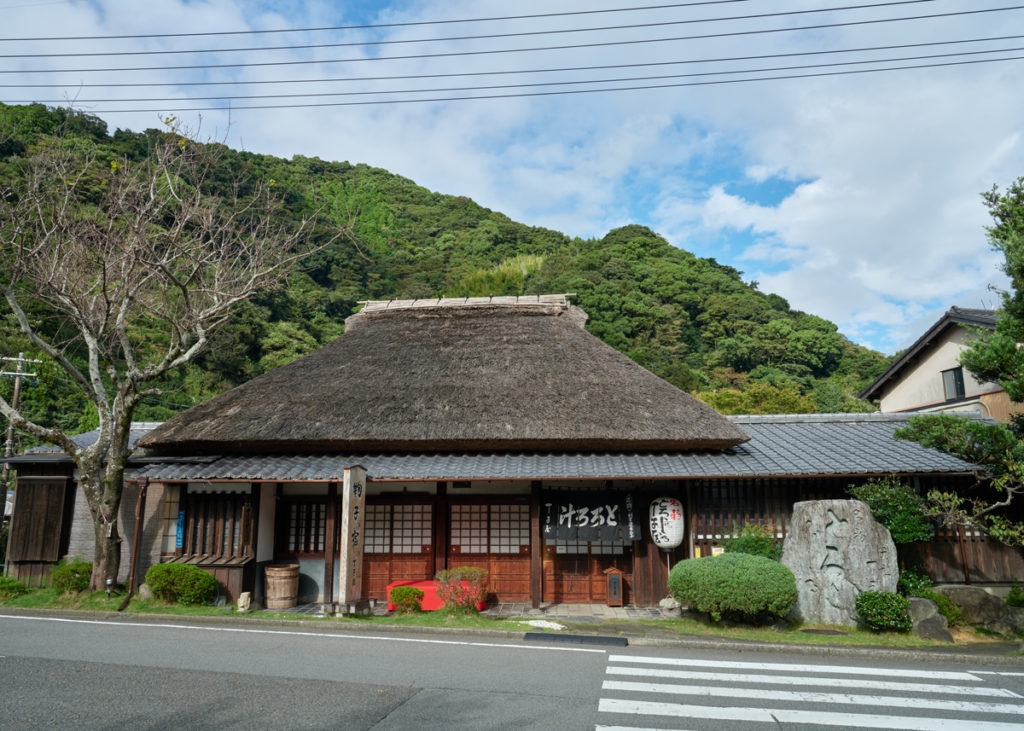

In-store at Chojiya sits the HELIO COMPASS, an Earth calendar that is displayed alongside other items related to the history and culture of the Tokaido inn towns. The HELIO COMPASS is a calendar that represents the year as a round circle with the sun at its core, giving viewers a bird’s-eye view of the daily changes in the orbits of the planets and the changing seasons.
The connection between Shibayama and Kaichi Sugiyama, the inventor of the HELIO COMPASS, goes back to their grandfather’s generation: in July 1974, Shizuoka experienced a disaster known as the “Tanabata Downpour,” when 508 mm of heavy rain fell in a single night. A flood prevention team was formed to repair the damaged Mariko River, and the grandfathers of the two served as its leader and deputy leader, working tirelessly to repair the river.
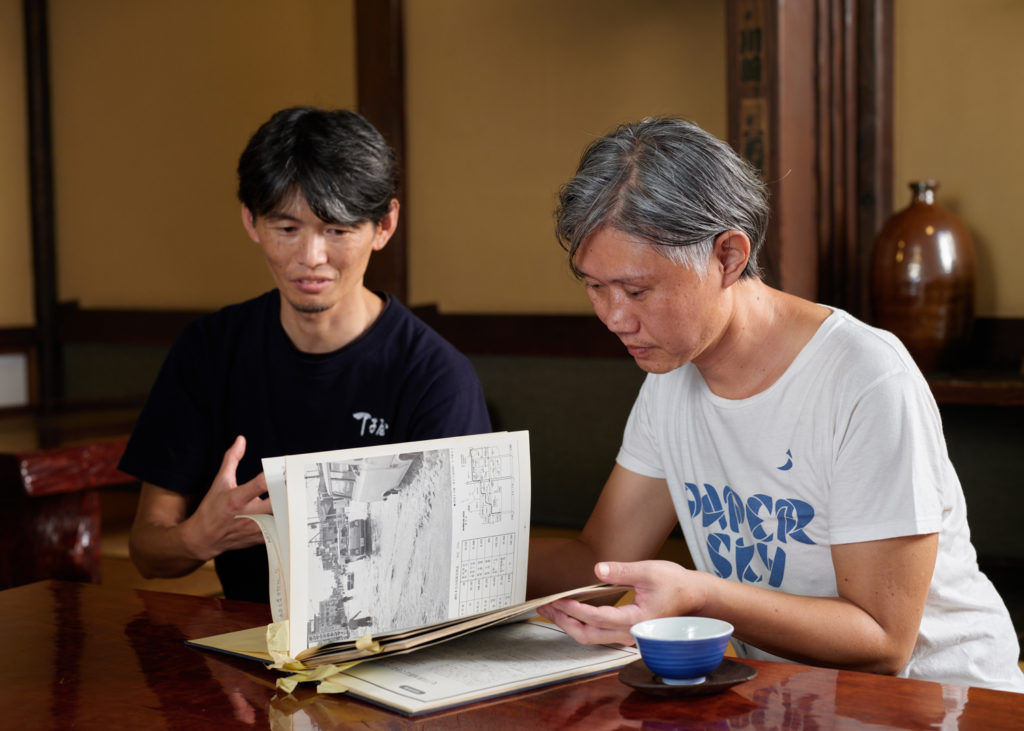
Shizuoka experienced another torrential downpour in September 2022, and Sugiyama says, “You could say that the Mariko River did not flood this time thanks to the repairs made by our grandfathers.” It was also the generation of their grandfathers who had experimented with various methods of Japanese yam (which in Japanese is called ‘jinenjo’) cultivation, a field that at the time was not well established.
“The word “jinen” is a Buddhist term that means “to do as one pleases”, and as the kanji indicates it has the second meaning ‘to circulate’ or ‘to go around’. Perhaps the fact that we use Japanese yam is the reason why Chojiya has been around for 400 years, and I feel that our relationship with farmers and the earth has to also be in harmony with the cycle of nature,” says Shibayama.
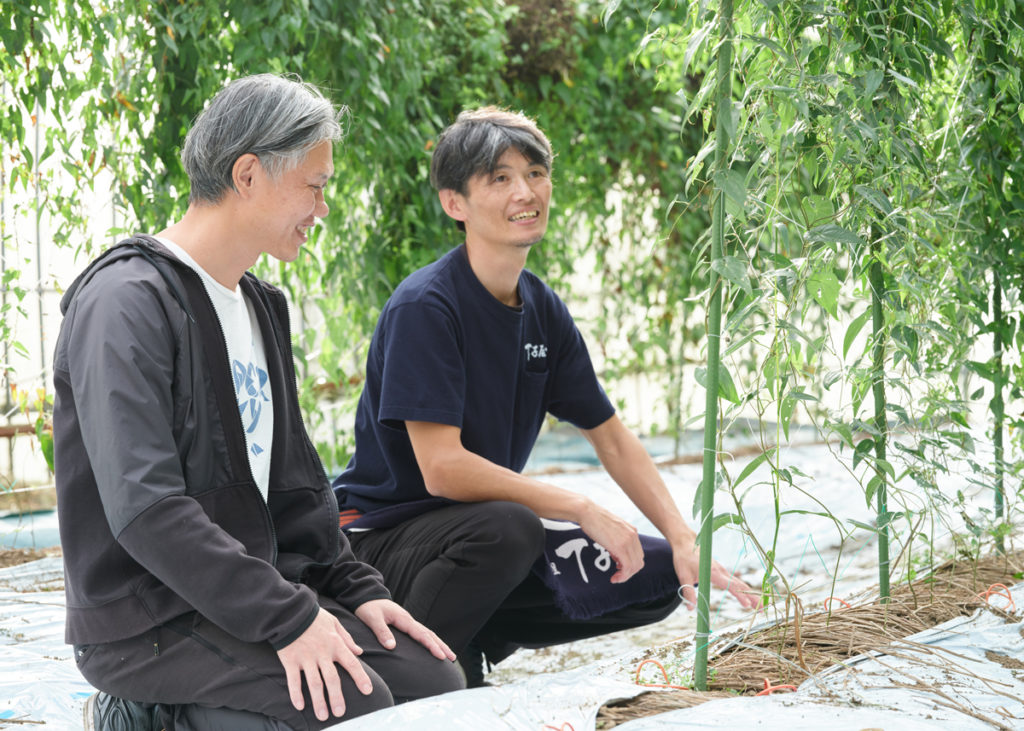
Sugiyama originally wanted to become a Japanese yam farmer, and he followed in Shibayama’s grandfather’s footsteps for five to six years to learn.
He said, “We once planted some yams in a flower bed at an elementary school as part of an educational program. Hiro-kun’s (Shibayama) grandfather was amazing. He not only planted the Japanese yams but also told us about the earth’s 4.6 billion years of history, which was so engaging and entertaining. During the fall harvest, he would invite all the parents and teachers, and together they would all grate the yams. His grandfather would come in his happi (a traditional Japanese coat usually worn at festivals), and it felt like a festival! The most important thing I learned was that the Japanese yam is not just a potato, rather it can be a way of looking at the world and creating traditions,” he says.
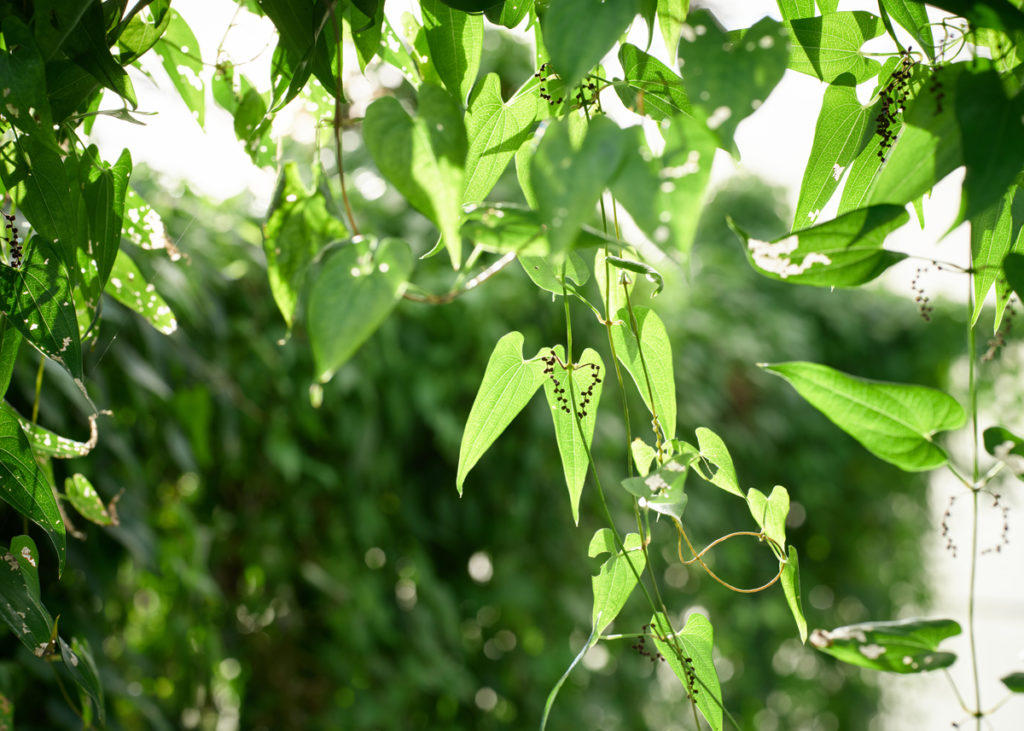
Meanwhile, Shibayama, who had been active in taiko drumming in Osaka, returned to Mariko in 2006 and joined Chojiya. It was around that time that the two began to collaborate.
The experience of learning about Japanese yams was a big driver for Sugiyama in his creation of HELIO COMPASS.
“The characteristics of the HELIO COMPASS, which allows us to look at the solar system as the year goes by, is deeply connected to the Japanese yam and its harvest, something that I had always been involved in. So, naturally, it came together in my mind,” he said. The word ‘cycle’ in the phrase “cyclical agriculture” naturally connected the universe and the Japanese yam and was a phrase his grandfather would often use,” he says.
The HELIO COMPASS on display at Chojiya is a Japanese yam HELIO COMPASS created by Sugiyama after listening to the stories and records of Japanese yam cultivation.
“When I talk to the farmers, they have a natural sense of something like a HELIO COMPASS. We are hoping to update the calendar so that Japanese yam farmers can look at it and act accordingly given the particular time of year,” says Shibayama.
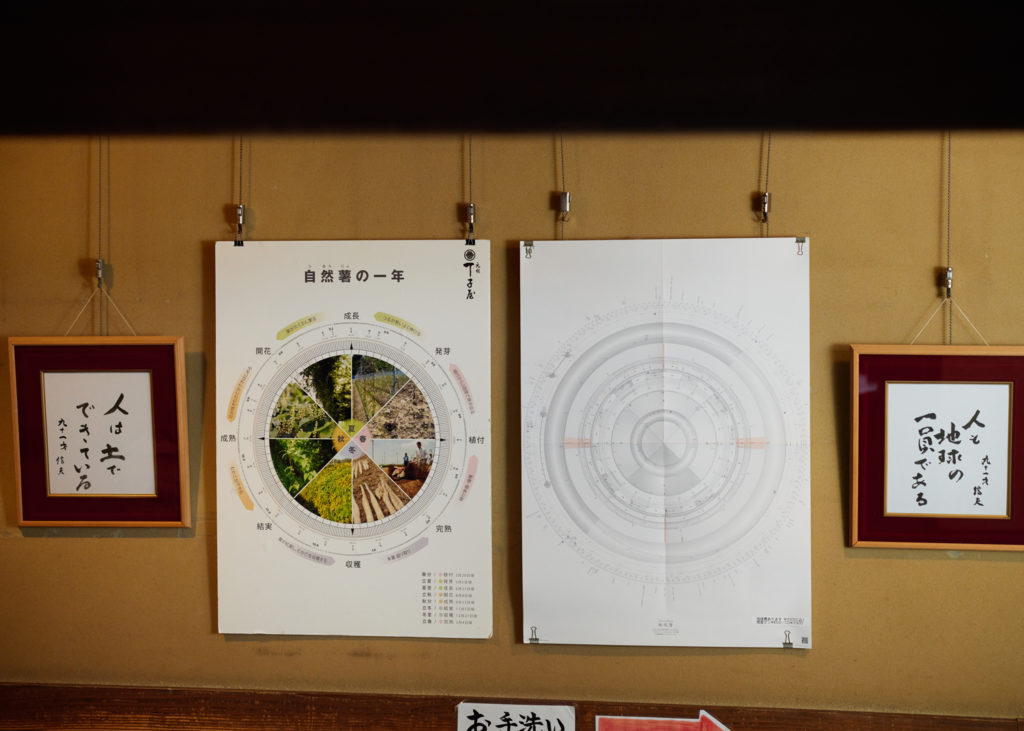
What Sugiyama wants to convey through the Japanese yam HELIO COMPASS is that “a meal is more than just tasting, it’s like eating a memory, and that memory is the memory of the soil.”
“At Chojiya, we have been eating Japanese yam with a mortar, pestle, and grater for 400 years. The yam is the only native wild potato in Japan, and the story of a cup of yam soup goes back to the Jomon period.”
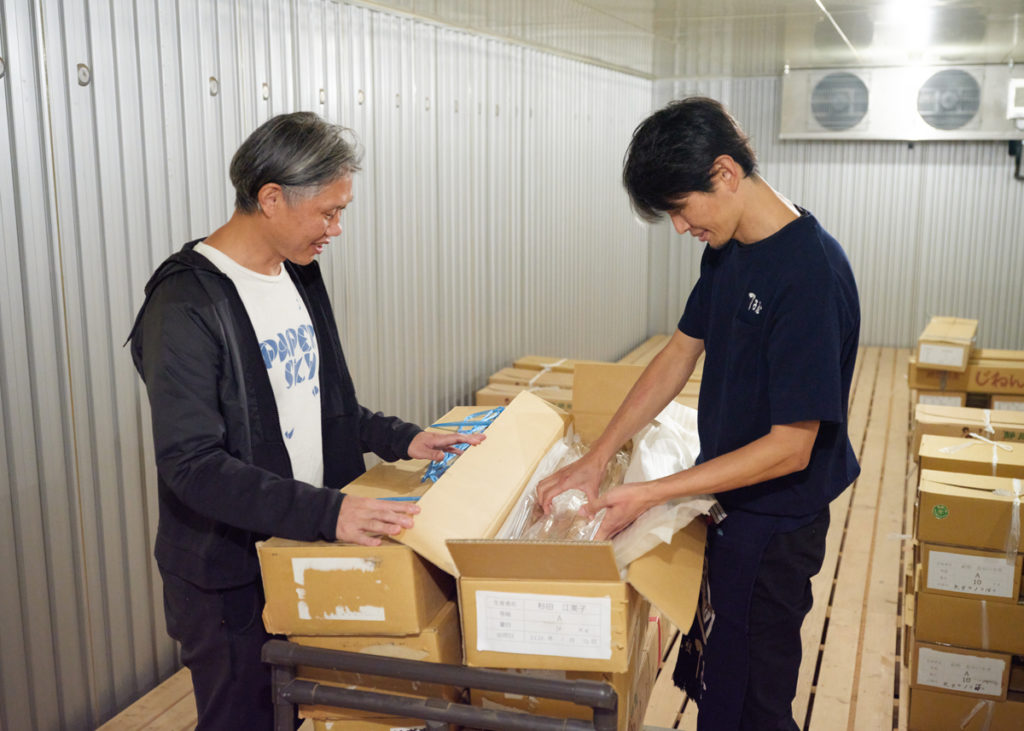
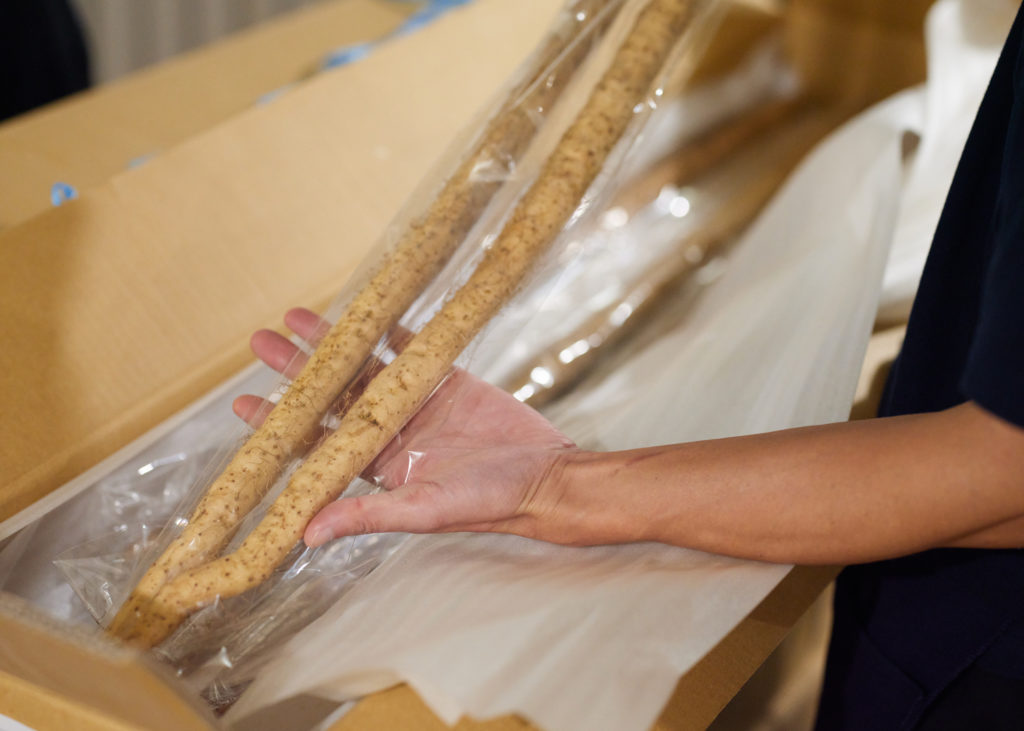
On October 15, 2020, Shibayama assumed the professional name “Heikichi Chojiya” representing the 14th generation of his family. That day was the anniversary of the death of Hiroshige Utagawa.
“This is the scenery I’m aiming for,” said Shibayama, pointing to an ukiyoe (Japanese wood print) from Hiroshige that he had brought along, titled “Fifty-Three Stations of the Tokaido: Mariko.”
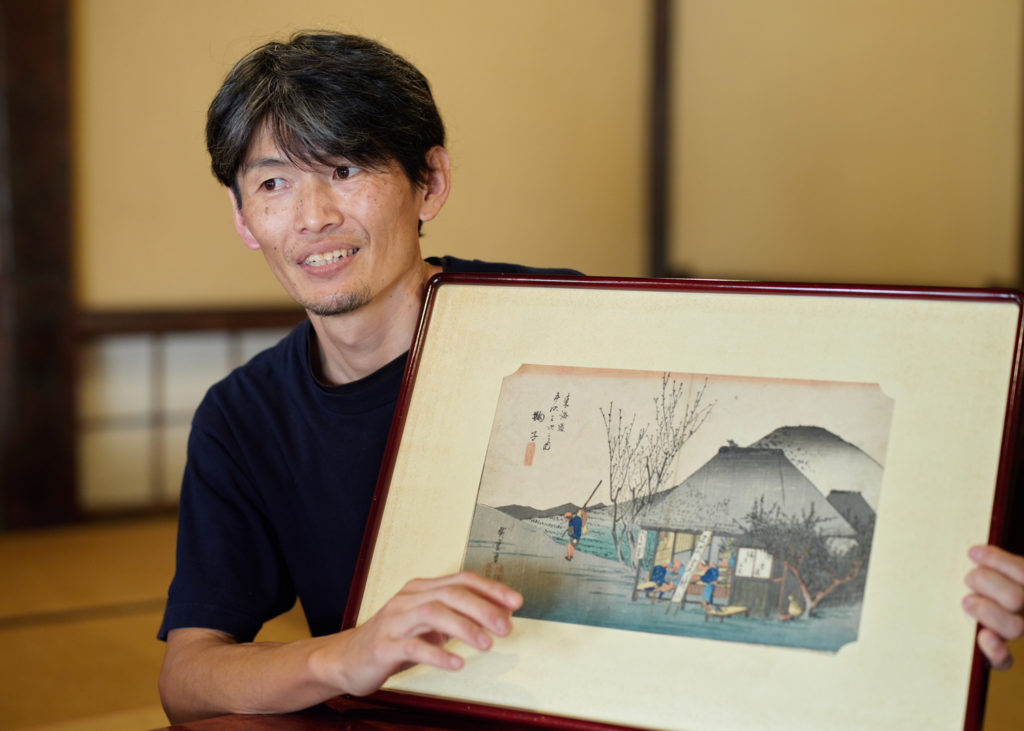
“Even though the landscape was painted approximately 200 years ago, some things in the painting have not changed at all: the travelers, the teahouse serving yam soup, Japanese yam farmers, and babies representing the next generation, and so the future is also depicted in this old painting. I want to continue to aim for such connections depicted here in this scenery of Mariko, and to do so in the next 5, 10, or even 100 years from now without blurring the lines.”
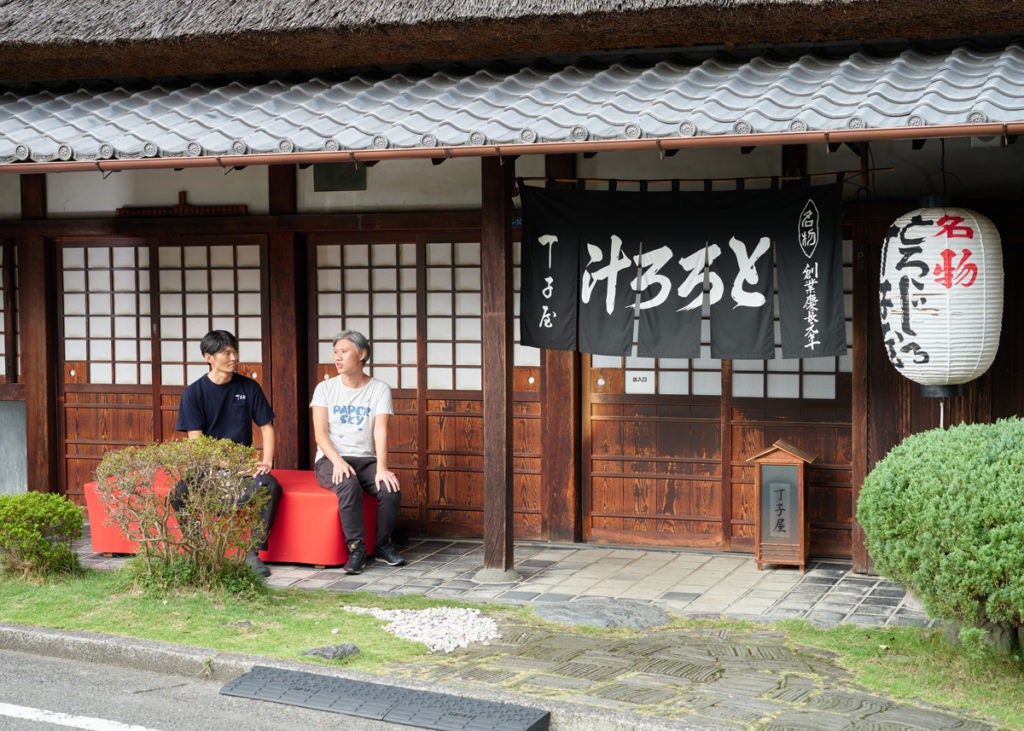
Hiroyuki Shibayama
Born in Shizuoka City, Shizuoka Prefecture, he joined Chojiya in 2006, and in October 2020, he assumed the position of President and Director, assuming the name of Heikichi Chojiya, 14th generation. He is also involved in activities to promote the history and culture of the Tokaido’s inn towns, such as serving as a board member of the “NPO Historical Roads Tokaido Shuku-Eki Conference.”
Kaichi Sugiyama
Born in Shizuoka City, Shizuoka Prefecture. He is the creator of the HELIO COMPASS. He is a self-taught calendar researcher, which led him to invent the HELIO COMPASS, and he has been writing a series of articles in PAPERSKY, “Cosmic Pizza, Edible Earth Calendar” in collaboration with Omnipollos hatt.











